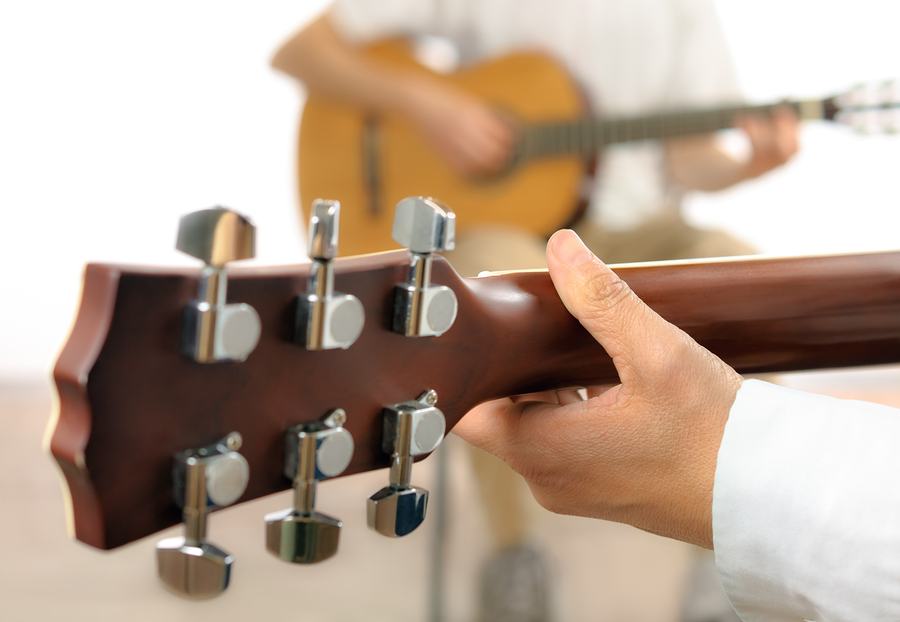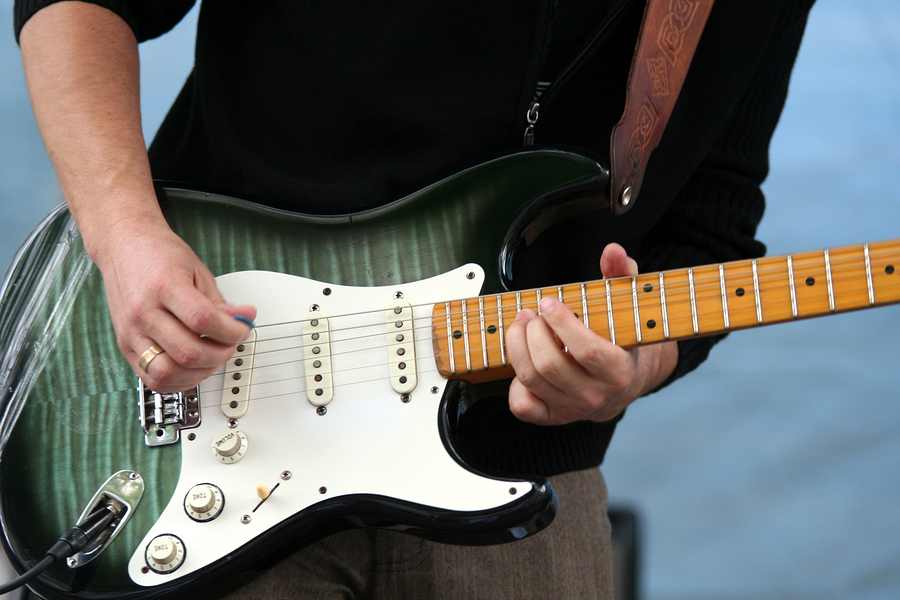
Photo by Bigstock photo
Whenever you want to solo over a song in a minor key you can safely use the minor pentatonic or blues scale. However it will always sound rock or bluesy one way or another.
Sometimes the melody of a song asks for something else than just that rock/bluesy feel. A diatonic melody approach might then be more suitable. Here is where minor scales come in.
There are a 3 types of minor scales. The natural, harmonic and melodic minor scale. In this post we’ll discuss the natural minor scale.
Formulas
The natural minor scale contains 7 notes. The scale formula is 1 2 b3 4 5 b6 b7. So compared to the major scale (1 2 3 4 5 6 7) it’s got a minor third, a minor sixth and a minor seventh.
If you start on a random note to build a natural minor scale the pattern of whole and half steps would be: “whole, half, whole, whole, half, whole, whole”. (a whole step = 2 frets, a half step = 1 fret)
So the formula in semitones = 2 1 2 2 1 2 2
Relative minor scale
The natural minor scale is also known as the Aeolian mode or relative minor.
Every major scale has a corresponding natural minor scale, also called the relative minor. If you play a major scale and go up to the 6th degree of the scale, then that note will be it’s relative minor. From that 6th note you can play seven notes ascending (going up) in the scale and that will be it’s relative minor scale.
Continue Reading Once I learned how to build chords of a major or minor scale, the logic of chord progressions made much more sense.
Once I learned how to build chords of a major or minor scale, the logic of chord progressions made much more sense. The first scale sequence I learned without being aware of it was the “pentatonic triplet sequence”. They were all over the place in Metallica solos and I learned a lot of them.
The first scale sequence I learned without being aware of it was the “pentatonic triplet sequence”. They were all over the place in Metallica solos and I learned a lot of them. Knowing how to build chords and chord progressions is a really great tool for writing your own songs and communicating with your fellow musicians on how to play a certain piece of music, “Let’s play a 1 4 5 progression in the key of…”
Knowing how to build chords and chord progressions is a really great tool for writing your own songs and communicating with your fellow musicians on how to play a certain piece of music, “Let’s play a 1 4 5 progression in the key of…”